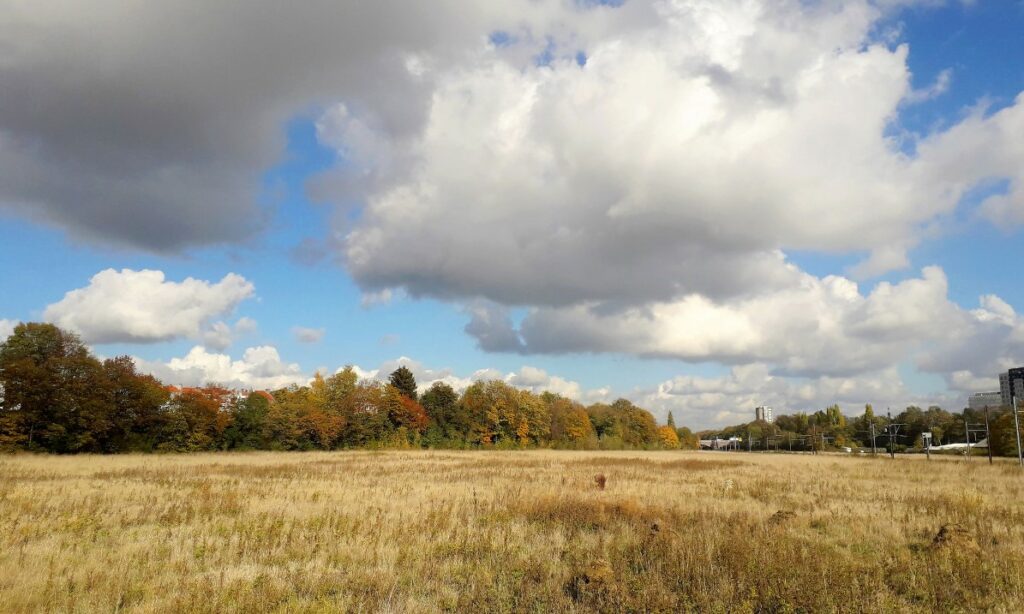The Urban Development Corporation, SAU, and its partners on Thursday unveiled their project for a new sustainable neighbourhood on the site of the former Josaphat marshalling yard.
The location is part of the Josaphat Brownfield, located between Schaerbeek and Evere in Brussels. This wasteland has been the object of grassroot mobilisation and political division in the capital, due to the biodiversity that has developed there over the years, including birds, wild bees, moths, butterflies, dragonflies, damselflies, beetles and grasshoppers.
Reduced from the thousand homes initially planned, the project presented at a press conference on Thursday now provides for 509 mixed dwellings, including 246 private homes, 135 social rental housing, 23 acquisitive homes and, finally, 105 units of “average” housing (i.e. homes intended for the middle class).
The project, spread over 4 hectares, also includes a school, a brewery, two shops, a café, three community premises and locations dedicated to economic activity.
The 373 non-private parking spaces will be located under the two main housing blocks. A single access will lead to them, as the district is intended to be pedestrianised, with cycle paths no more than two metres wide (to allow emergency vehicles to pass).
The main sticking point, safeguarding the biodiversity of the wasteland, has been taken into account, according to the SAU and its partners – winning consortium Eiffage/Axa, Brussels public operator citydev.brussels, regional housing agency SLRB, and the Housing Fund.
Fruit trees, shrubs, low plants, a dragonfly pond, lighting that respects nocturnal animals, nesting boxes and insect hotels have led architect Clément Willemin to say that the environment will be even “richer” in terms of biodiversity.
The wasteland, an area with poor, sandy soil, will continue to host the fauna and flora currently present, while “other species will replace them in the built-up site,” according to Willemin.
In total, the urbanised area of the new district will occupy 33% of the 10.6 ha of the current wasteland and the wooded slope to the west of the railway that runs through the area.

